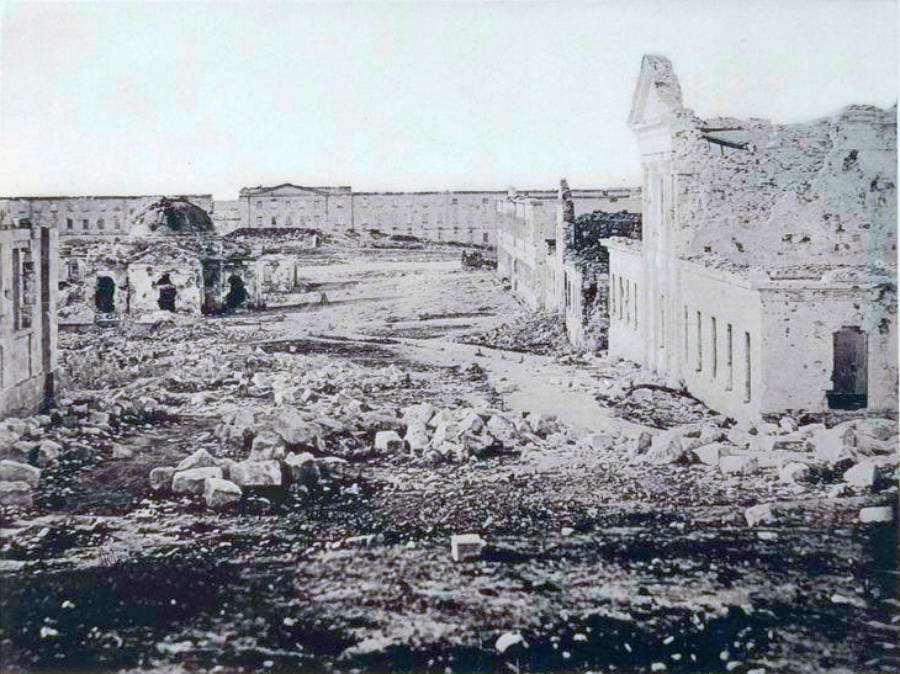Mark Twain on the Aesthetics of Siege
Sevastopol, Crimea in 1855
“Sebastopol is probably the worst battered town in Russia or anywhere else,” American satirist Mark Twain wrote in his 1869 travelogue The Innocents Abroad. Examining the wreck of a city that had hardly recovered in the fourteen years since the Crimean War, Twain compared Sevastopol…



